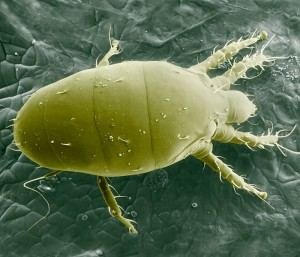Hey everybody! Hope this helps ID problems with some common garden pests and critters.
Root Aphids (Aphidoidea)
"Root Aphid" is a broad term describing an unknown number of species of aphids that can attack crop roots. They are most commonly seen outdoors, where they feed on leaves of plants and overwinter either as a dormant egg or as a colony feeding on stored sugars/starches in plant roots. Indoors they are common pests due to the concentration of sugars, amino acids, and nutrients in the roots. Aphid eggs are sought after by some species of ants, who will nurture a colony of aphids to feed on their sugar and nutrient rich excrement. A common misunderstanding is the referencing of Root Aphids to phylloxera, which is another family of insects that is very similar to aphids but lacks the telltale "tailpipes" and "honeydew" discharge that distinguishes aphids.
here are some pictures of root aphids in their winged or "flier" form
View attachment 301449View attachment 301452
you can see by these images that the winged aphid holds it's wings parallel and vertical, at the sides of it's body. It's head is similar sized to the rest of the body, and it's abdomen is either green, yellow, brown/red, or black depending on diet. It's legs are also all of a similar size (male aphids can have quite long legs, however). Immature aphids can also be seen in the bottom picture.
"crawler" form:
View attachment 301448
Notice the "tailpipes" (cornicles) on the abdomen of the aphid. These protect it when it feels threatened by producing a hard, waxlike substance that coats the aphid's exterior. This aphid was unique in that it displayed many of the common colors of root aphids. Depending on what they feed on and their maturity aphids can be any shade of either yellow, green, or red, and occasionally black/brown.
an example of aphid colonization/infestation
View attachment 301447
View attachment 301446
Fungus Gnats (Mycetophiloidea)
Fungus gnats are generally obnoxious because they get stuck in flowers in large numbers. Since their larva eat decaying matter, a growing population of fungus gnats generally indicates either over-watered plants/over saturated media, or an unhealthy root mass. Females will travel from pot to pot looking for optimum conditions to lay eggs. Females lay eggs in the top 2-3 inches of soil and can lay up to 200 in her 10 day life. Both the eggs and the larvae are very cold resistant, but cannot survive without a moist environment. It is recommended to let the top 2-3 inches of soil dry out between waterings in most media to avoid fungus gnats, especially late in flower.
Fungus Gnat flier:
View attachment 301450
View attachment 301451
You can see that fungus gnats have three definitive body segments, very long legs, and wings that overlap and fold flat over it's abdomen. They are generally much larger than winged root aphids.
Fungus Gnat larvae
View attachment 301453View attachment 301454 The brown inside this guy is whatever he's been eating...probably roots as this picture was taken very late in flush. Normally they are clear like the section directly before his head. You can see his black head as well as his body segments, very similar to a caterpillar or inchworm.
And last but not least, a beneficial insect, the springtail
View attachment 301444
these guys resemble thrips, but are very small, clear, and can dart away quite quickly. Usually found in the runoff of pots after watering, having a springtail population isn't something to worry about. It is a sign that the soil biosphere (the rhizosphere) is balanced and in check. Springtails are known to eat spores and mycelia of pathogenic fungi that can cause damping off, as well as carry mycorhizzal fungi to root hosts, and control other forms of microlife that become imbalanced or disrupt the rhizosphere. Springtails are estimated to have some of the highest populations of any animals on earth, and play an important role in soil conditioning.
View attachment 301445
Springtails are nice to eachother, they know what's up. They're you're friends, too!
That's all for now folks, thanks for lookin!






